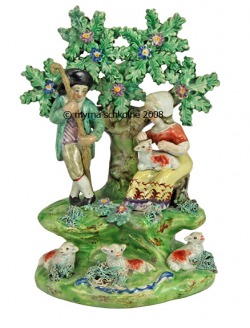I am a self confessed workaholic, but one of the treats of going to London is the fact that at the end of the day my office cannot beckon. I always pick up the free newspaper that is shoved into my hands as I exit the tube, and last thing at night I do the Sudoku to help turn off my brain. The same newspaper includes another brainteaser: the reader is asked to spot 5 differences in two closely similar photographs. I must admit to finding this challenging because, unless it is a figure, the minutiae usually escape me.
With figures, the devil is in the details. Knowing what should be on a figure is invaluable clue to damage or restoration. A small component of a figure can easily be lost and the restorer will disguise the scar from the injury that caused the loss. The ignorant buyer may assume that the figure was just made that way. Again and again, I encounter just this issue. That's why it is so important to be able to spot the difference...between the ideal that you carry in your brain and the figure that is available for sale. Now let's try to spot the similarities and differences in these two figures.
I will admit I was caught here. These two figures have no restoration (except the end of the shepherd's crook on one.) Both are marked WALTON. But one is made with a bocage; the other has a spill holder. Note another key difference. The top figure has a perky pooch placed to the left of the shepherd; the lower figure has no dog at all. In the spot where the dog should be there is a rough circular patch under the green paint. The only part of the dog that remains is a paw, also covered over with green.
Conclusion? I decided that the dog had been knocked off the base and a restorer had covered the scar with green pain. My friend Malcolm Hodkinson corrected me. He pointed out that the green paint was original. The dog was knocked off the base in the biscuit or glaze firing.... and then enamel was applied over the scar (and the remaining paw.) Far from being the work of a modern day restorer, the rough green patch where the dog had been was a manufacturing flaw.Walton decided that the figure was far too good to discard, and a rough patch on the base was no big deal.
So learn from my mistake. Always look for differences. Know that most times they are significant...but turn your brain on so you won't be fooled!















